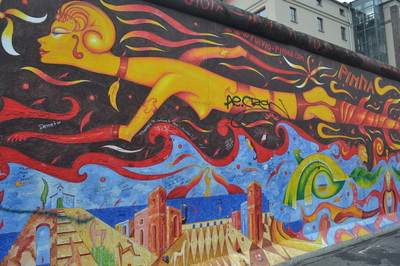This topic crosses your mind as you look at the defaced wall at the East Side Gallery, Berlin. When the wall came down, an artist from France, Thierry Noir, came over and started decorating it with the now famous paintings, which you see on coffee mugs and t-shirts at the souvenir shops.
The topic is not his paintings or those of the rest who were drawn by the most important event of last century, an event that symbolised a new way of life for the residents of both East and West Berlin.
The Wall that separated families and friends, the Wall that stood between the dreams and aspirations of countless Berliners, the Wall that saw scores of lives sacrificed in an attempt to live freely, came down. Curiously, the same wall that stood for oppression and dictatorship when it was standing, came to be known as a strong, if broken, symbol of freedom and enterprise; of hope and and dreams; of possibilities and a new life.
Now you would think these thoughts might cross the minds of millions of camera-toting tourists from around the world who are more interested in taking a picture than appreciating the power of the concrete section at the East Side Gallery. Obviously it doesn't as you can see from the defaced wall which runs to about a kilometer and half. It makes you wonder, 'How do you stop people from vandalising a piece of history?' If you preserve it in a glass case, it defeats the purpose of the wall and all it stood for. If you don't, you let all and sundry with a camera and a spray can ruin it to such an extent that the original paintings will be buried under the mischievous scrawls of the morons (there are even a few from a couple of guys from Singapore, bylines and all).
Which brings you to freedom and responsibility. It must be taught at school levels, that seems to be the only way.












 RSS Feed
RSS Feed




















